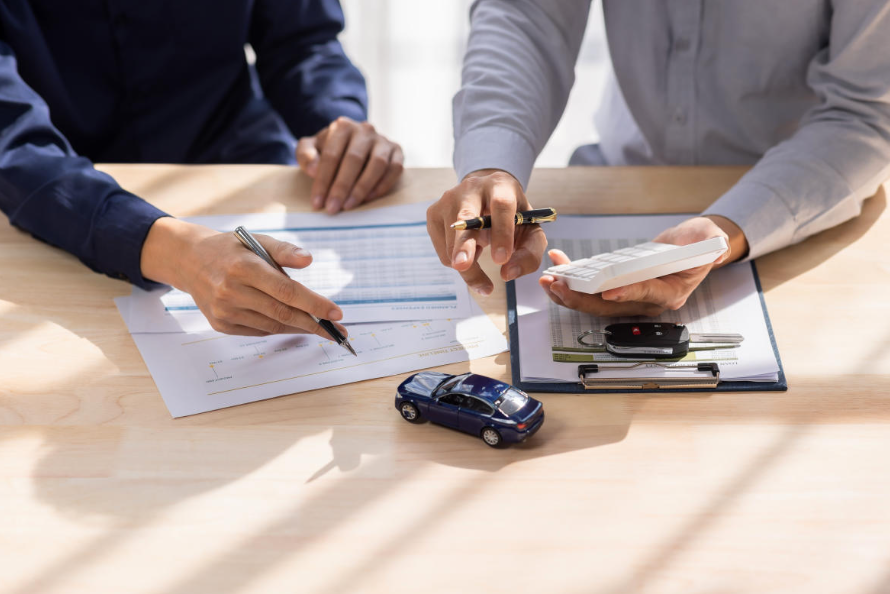Car insurance is a necessary expense, but let’s be honest, it can feel like a real financial burden. You might wonder why your premium is so high, especially if you think you’re a safe driver. The truth is, car insurance rates are based on a wide range of factors, and many of them may surprise you.
In this post, we’ll break down 10 reasons why your car insurance is so expensive and what you can do to potentially lower your costs. No confusing insurance jargon here, just straightforward, useful info.
1. You Have a Poor Driving Record
This one’s pretty straightforward. If you’ve had accidents, traffic violations, or DUI charges, insurance companies see you as a higher risk. That means you’re more likely to file a claim, and your premium goes up to reflect that risk.
Tip: Drive safely, follow the rules, and avoid distractions behind the wheel. Over time, a clean driving record can help lower your car insurance rates.
2. You Live in a High-Risk Area
Where you live plays a big role in how much you pay for car insurance. If your neighborhood has high crime rates, heavy traffic, or lots of accidents, insurance companies will charge more to offset the higher risk.
Tip: While moving just to lower your insurance may not be realistic, consider parking your car in a secure garage or using anti-theft devices. Some insurers offer discounts for those.
3. You Have a Low Credit Score
In many states, insurance companies use your credit score as part of their formula for setting rates. A lower score may indicate to insurers that you're more likely to file a claim or miss payments.
Tip: Work on improving your credit by paying bills on time, reducing debt, and monitoring your credit report. Over time, this could lead to lower car insurance costs.
4. You’re Young or a New Driver
Young drivers—especially those under 25—usually face higher premiums. Why? They don’t have a long driving history, and statistically, they're more likely to get into accidents.
Tip: Look for discounts available to students, such as good-grade discounts. Taking an approved driver safety course can also help cut down the cost of your car insurance.
5. You Drive a High-End or Expensive Car
Luxury vehicles, sports cars, and cars with expensive parts cost more to repair or replace, making them more expensive to insure.
Tip: When shopping for a new vehicle, check how much it costs to insure different models. Sometimes, a car that costs less to buy ends up costing more in insurance.
6. Your Coverage Is Too Comprehensive
The more coverage you have, the more you pay. If you’ve added extras like roadside assistance, rental car reimbursement, or a low deductible, your premium will reflect those choices.
Tip: Review your policy regularly. Do you really need all the extras? Could you raise your deductible a little to lower your monthly cost? Make adjustments based on your current needs.
7. You Have a Long Commute or High Annual Mileage
The more you're on the road, the higher the risk of accidents. That’s why drivers with long commutes or high mileage pay more for car insurance.
Tip: If you’ve started working from home or your driving habits have changed, tell your insurer. You could qualify for a low-mileage discount and save money.
8. You’ve Lapsed on Insurance Coverage Before
Gaps in your car insurance history, like going uninsured for a while,e can raise red flags for insurance companies. Even if you're not driving, a lapse in coverage can make you look like a higher-risk customer.
Tip: Always maintain continuous coverage, even if you’re switching providers or not using your car as much. Some companies offer discounts for loyal, consistently insured customers.
9. You Filed Multiple Claims Recently
Even if those claims weren’t your fault, frequent claims can mark you as a higher risk. Your insurer may raise your rates or even decide not to renew your policy.
Tip: Try to handle minor repairs out-of-pocket if you can afford to. Save your insurance for bigger, more expensive issues. Fewer claims could mean lower premiums in the long run.
10. Your Insurance Company Sets Higher Base Rates
Every insurance company calculates risk differently. Some may just charge more overall, even if your record and circumstances are good. If you’ve been with one insurer for years, you might not even realize you’re overpaying.
Tip: Shop around every 6-12 months. Compare quotes from multiple insurers. Many companies offer competitive rates to attract new customers, and switching could save you hundreds of dollars a year.
Final Thoughts: You Have More Control Than You Think
Car insurance can feel like a mystery, but once you understand what’s driving your rates up, you can take real steps to reduce them. From adjusting your coverage to improving your credit score, small changes can make a big difference over time.
Remember: every driver is different. What works for one person may not work for another, so take the time to review your policy, ask questions, and explore your options. Your wallet will thank you.
FAQs About Car Insurance
1. Why does my car insurance go up every year even if I haven’t had any accidents?
Insurance rates can rise due to inflation, higher repair costs, changes in state laws, or even trends in your area—like an increase in accidents or thefts. Even if your record is clean, these external factors can still affect your premium.
2. Can bundling car insurance with other policies save money?
Yes! Many insurance companies offer discounts when you bundle your car insurance with homeowners, renters, or life insurance policies. It's worth asking your insurer about bundling options.
3. What’s the best way to lower my car insurance quickly?
Some quick ways include raising your deductible, dropping unnecessary coverage, applying for discounts (like good driver or student discounts), or switching providers. Also, avoid lapses in coverage and keep your driving record clean.

